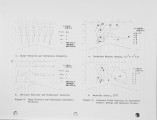| Title |
Turbulent Mixing Studies in a Secondary Combustor Model |
| Creator |
Foote, J. P.; Schulz, R. J.; Giel, T. V. Jr. |
| Publisher |
University of Utah |
| Date |
1983 |
| Spatial Coverage |
Akron, Ohio |
| Abstract |
A water flow model of the secondary combustor in the Low Mass Flow MHD test train at the U. S. Department of Energy Coal Fired Flow Facility was tested in order to determine the effects of combustor geometry and combustion air injection techniques on the flow and mixing in the secondary combustor. A dual Bragg cell laser velocimeter was used to obtain detailed two-component velocity data for various model configurations, to examine the effects on mixing efficiency of oxidizer injection velocity, oxidizer injection angle and various flow restrictions. The modeling results provide useful insights for the operation of the Coal Fired Flow Facility secondary combustor. |
| Type |
Text |
| Format |
application/pdf |
| Language |
eng |
| Rights |
This material may be protected by copyright. Permission required for use in any form. For further information please contact the American Flame Research Committee. |
| Conversion Specifications |
Original scanned with Canon EOS-1Ds Mark II, 16.7 megapixel digital camera and saved as 400 ppi uncompressed TIFF, 16 bit depth. |
| Scanning Technician |
Cliodhna Davis |
| ARK |
ark:/87278/s6w098gk |
| Setname |
uu_afrc |
| ID |
418 |
| Reference URL |
https://collections.lib.utah.edu/ark:/87278/s6w098gk |





















